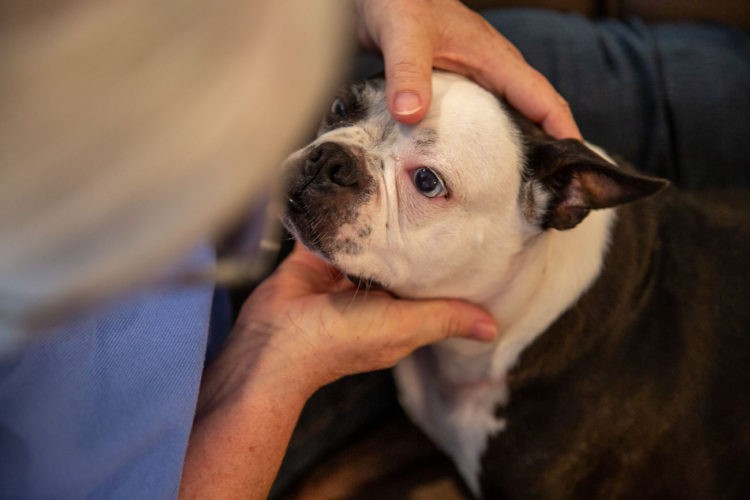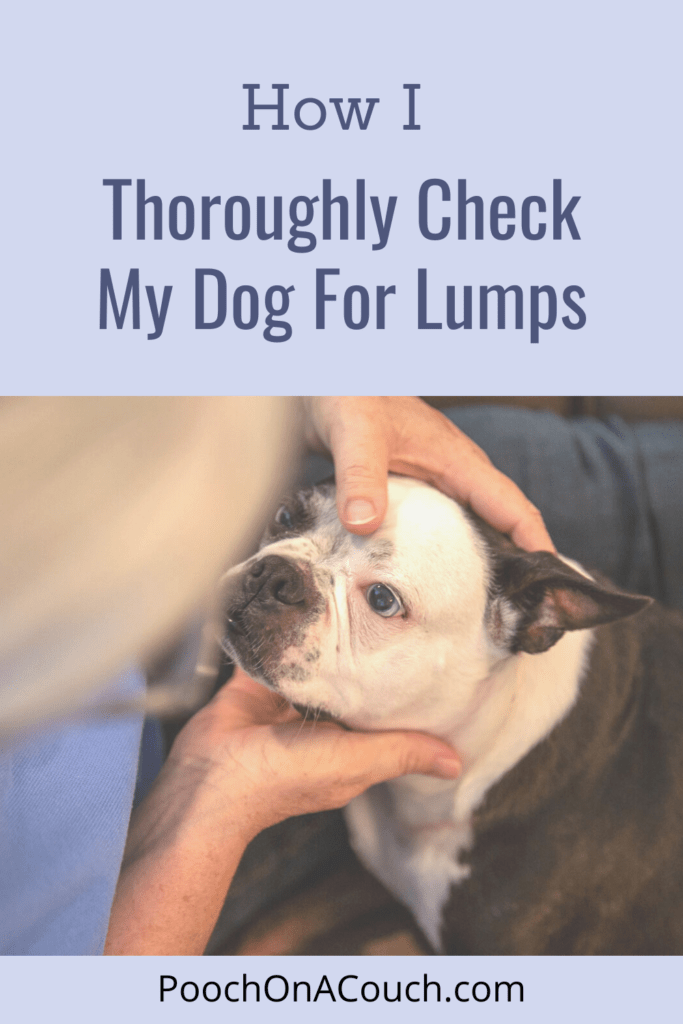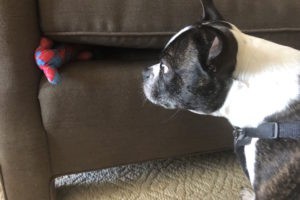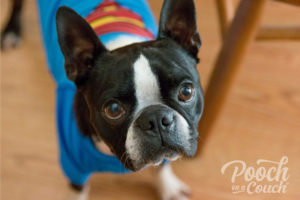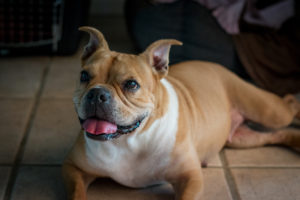Why You Should Check Your Dog For Lumps and Bumps
Do you regularly check your dog for lumps? How often? What’s the best way to check for lumps and bumps on your dog’s body? If you find one, what should you do?
This week, Sassy Blue is scheduled for surgery to remove a smaller-than-pea-sized lump from one of her mammaries. This is her second surgery in three months for the same issue. After the first surgery, the removed tissue wasn’t sent to a lab for histopathology, therefore we do not know what kind of growth it was. This time, we will send off the removed tissue to the lab for evaluation by a pathologist.
Yes, it will cost extra. But, since Sassy keeps developing lumps, it makes sense to do diagnostic testing.
In preparation for Sassy’s surgery, I decided to check her for lumps at home to see if there were other areas of concern to discuss with the veterinarian. By checking for lumps at home, Sassy is more relaxed and familiar with my touch and I can take my time.
Diagnosing Lumps And Bumps
According to the articles I’ve read, most lumps and bumps on a dog’s skin are non-cancerous. Some growths are fatty tumors, some are benign (non-cancerous) growths, but some are cancerous tumors.
Should you find a lump on your dog, how do you know which lumps are concerning and which ones aren’t?
Which bumps should you ask your veterinarian to evaluate and which ones can you wait a while and monitor?
I’m not confident in my veterinary training (wink wink) to make that preliminary diagnosis all on my own. When I find a lump or bump, I’m going to let my veterinarian handle things.
In one instance, we determined a foster dog’s lump on his hindquarters was an injection site reaction from his vaccine. Another time, we determined a tiny bump on the skin was a fatty deposit and we “emptied” it.
As I learn more about lumps and bumps, I’m able to be less anxious, but I ALWAYS tell my veterinarian about any found lump/bump (if possible, I send them a photo) and allow my veterinarian to advise me on my course of action. MOST OF THE TIME, they are going to direct me to come in for an in-person evaluation. And I go.
There are several ways a veterinarian can evaluate a lump or bump. Often, a veterinarian will do a fine needle aspirate of the bump, gathering cells inside the needle. These cells are pushed out of the needle onto a slide using forced air from a syringe. Then, the vet takes a look-see under the microscope to see what’s there. Many times, there’s enough information there to make a diagnosis, or just enough information to let the vet know that the expertise of a cytopathologist is warranted.
A veterinarian can also perform a biopsy. There are several ways to do this, the vet will choose the best method depending upon many factors. Biopsies usually include sending the tissue sample out to the lab to be evaluated by a pathologist. Some biopsies can be performed under light sedation, other biopsies must be performed under general anesthesia.
Sue Ettinger, DVM DACVIM (Oncology) writes, “Unless the sample is composed exclusively of fat, clear cystic fluid, or acellular debris, it should be submitted to a trained cytopathologist. When in doubt, send it out.”
When in doubt, send it out.
In Sassy’s case, had her first surgery included a histopathology report, we would have more knowledge with which to make a very targeted surgery plan. In other words, we don’t know how aggressive we need to be with this second surgery. Some might argue that we need to remove all of her mammaries, which is a more extensive (and for Sassy, painful!) procedure.
(We ended up removing Sassy’s mammaries during a third surgery to remove more lumps. She’s been lump-free for more than a year. )
How To Check Your Dog For Lumps
After spending a couple of minutes typing in keywords in Google’s search box, I was surprised to find no clear guideline to help the pet caregiver perform a skin check on a dog. I found a couple of youtube videos, and the person performing the check used her whole hand, rubbing her dog with an open palm. It’s not wrong to do it this way, but very small lumps could easily get missed. In fact, one of Sassy’s lumps (and one I’m concerned about) is so small I would have missed it had I’d followed the youtube demo.
While I’m not prepared to produce a youtube video, (maybe one day!) I can share how I check my dog’s skin for lumps and bumps.
To help me record my findings, I found a form online. If you are skilled at line drawings, you could draw your own! The form shows both supine and prone positions. I will mark on the form the location of lumps I find. There’s room on the form for brief notes or a description of my findings.
Here’s a replica of the form I chose:
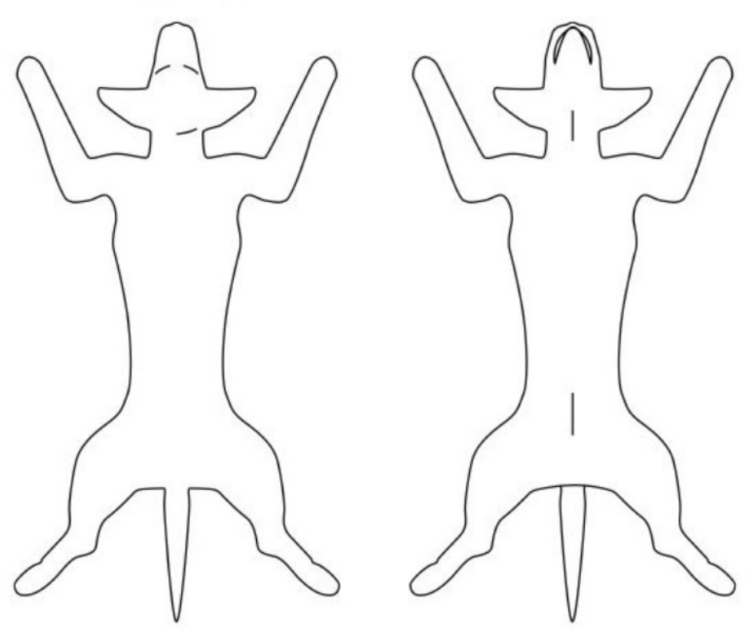
The face-down position is called the prone position, and the face-up position is called the supine position.
With the form by my side, I can begin checking my dog’s skin.
Use your fingertips when checking your dog for lumps.
The palm of the hand certainly isn’t a wrong method, and you can cover a lot of territory quickly by using this method. I may start with the palm of my hand, but I’m not going to only use my hands.
I use my fingertips to check a dog for lumps. The tips of your fingers have more touch receptors in them than the palm of your hand. Mo Costandi wrote an article for The Guardian and he writes, “Your fingertips are among the most sensitive parts of your body. They are densely packed with thousands of nerve endings, which produce complex patterns of nerve impulses that convey information about the size, shape, and texture of objects.” When we are looking for lumps and bumps, we need to feel the changes on the surface of our dog’s skin.
I primarily use my thumb.
Tip to tail, head to toe, give your dog a full body check for lumps
As I briefly touched on above, I check my dog for lumps when they are calm and relaxed, usually in the evenings after we are settled on the sofa. I can do a partial skin check during baths, but the dogs eventually get antsy and want out of the tub before I can finish!
I’ve developed a routine when I check for lumps and I follow that routine every time. This way, my exams become a habit and I don’t forget to check a spot.
Dogs can get cancer anywhere – in their mouth, nasal cavity, ear canals, between the toes, even around their anus. All of these areas should be checked every time you check for lumps.
Sassy’s Skin Check – Looking For Bumps In All Of Her Places
I start with Sassy’s head when she is really quiet and settled. Cradling her head in my hands, I gently but with a little pressure, rub her jowls and neck with my thumbs while I look at her nasal passages and eyes for any obvious abnormalities. I peek at her gums, too. I recall finding a small area of hyperplasia on my dog Indy’s gums that needed to be surgically removed. I would have never known it was there if I hadn’t regularly looked into her mouth.
Looking at Sassy’s ears, I notice and feel a tiny bump on her ear pinna. It looks like a skin tag to me, but I’m not a veterinarian and I want the vet to know about this. She may elect to snip it off while Sassy is under anesthesia for the mammary tumor removal.
Read about Sassy’s storm phobia and how I help her
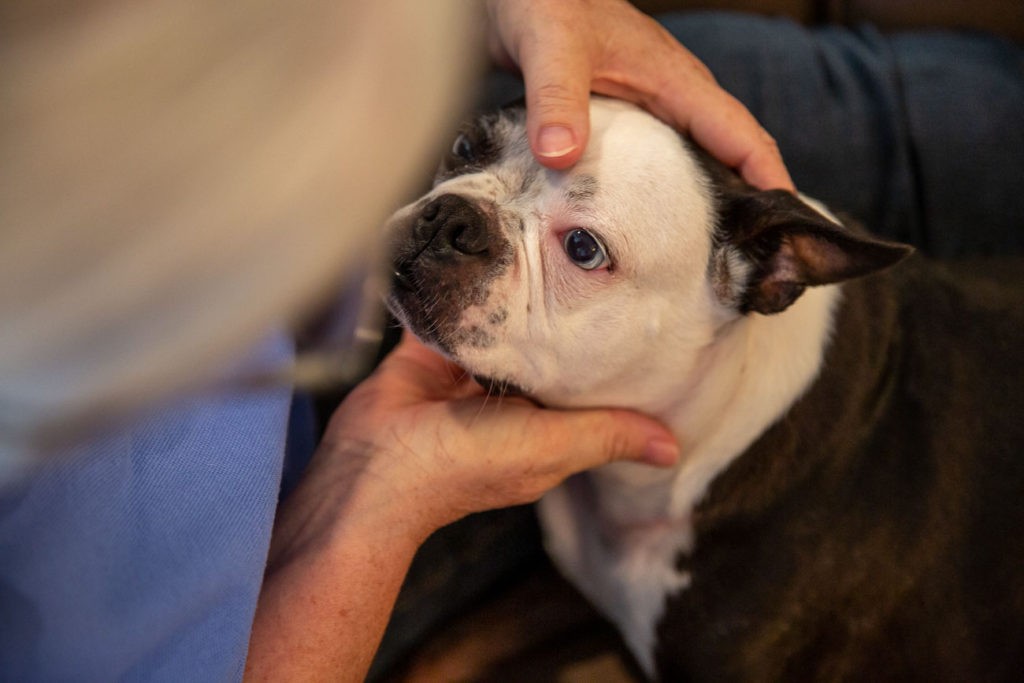
I massage the top of Sassy’s head and back of the neck with my thumbs using some gentle pressure, starting at the midline (spine) and working my way back toward the tail, then back up to the head working the left side and then the right side of Sassy’s neck and torso. I roll her over onto her back, giving her a minute to go back to sleep, then I do the same thing on her stomach. I stop and feel each mammary for anything that seems unusual to me.
Sassy has an abnormal bump on her third mammary, right mammary chain. I check it to make sure it isn’t measurably bigger since the last check.
My thumb feels a raised “dot”, actually, two, right where Sassy’s ear lobe attaches to her neck. I look close, or as close as I can with all of her fur and my fifty-seven-year-old eyes, and I’m not sure if I see a bump or a bug bite or a scar. I make note of it on my diagram.
I also notice hair loss near Sassy’s nose and want to talk with the vet about this. It’s probably nothing, but Sassy’s owner was told she was at risk of getting skin cancer there, so I want to be thorough.
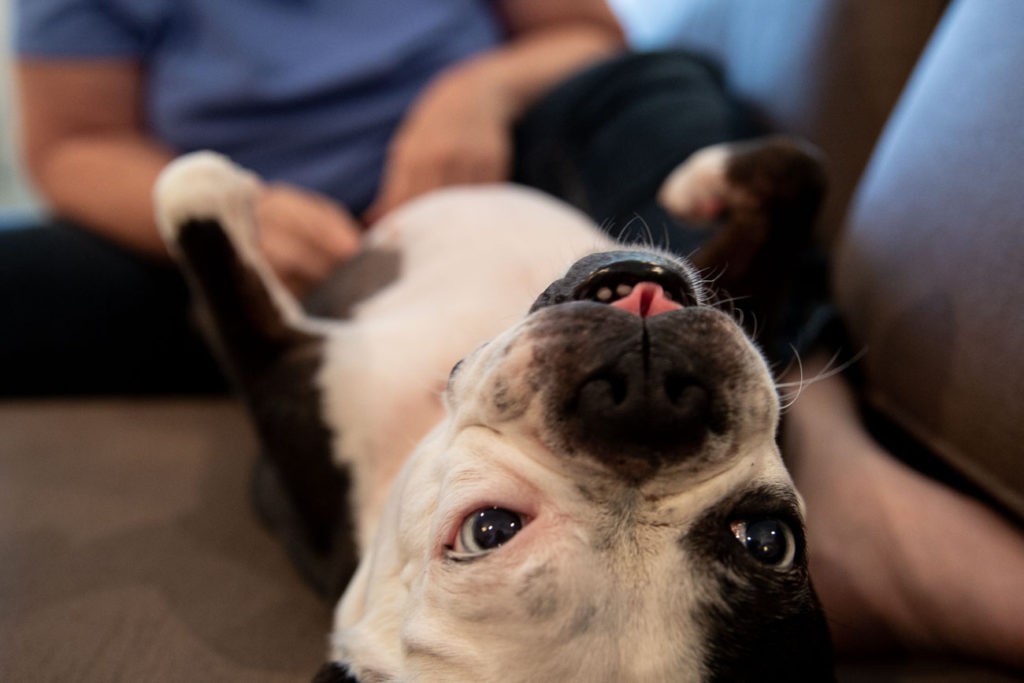
Once I’ve checked her head, neck, and torso, I look at her legs, starting with whichever leg is closest to me. I massage the shoulder, hip, upper leg lower leg, on down to her feet and between her toes. Dogs love to throw tumors in little hideaway places like in-between toes!
I find a small, tiny bump on Sassy’s front leg, above the knee. I mark this on my diagram. It is so small it could be difficult to find it again. Should this turn out to be a mast cell cancer, finding it this early is good.
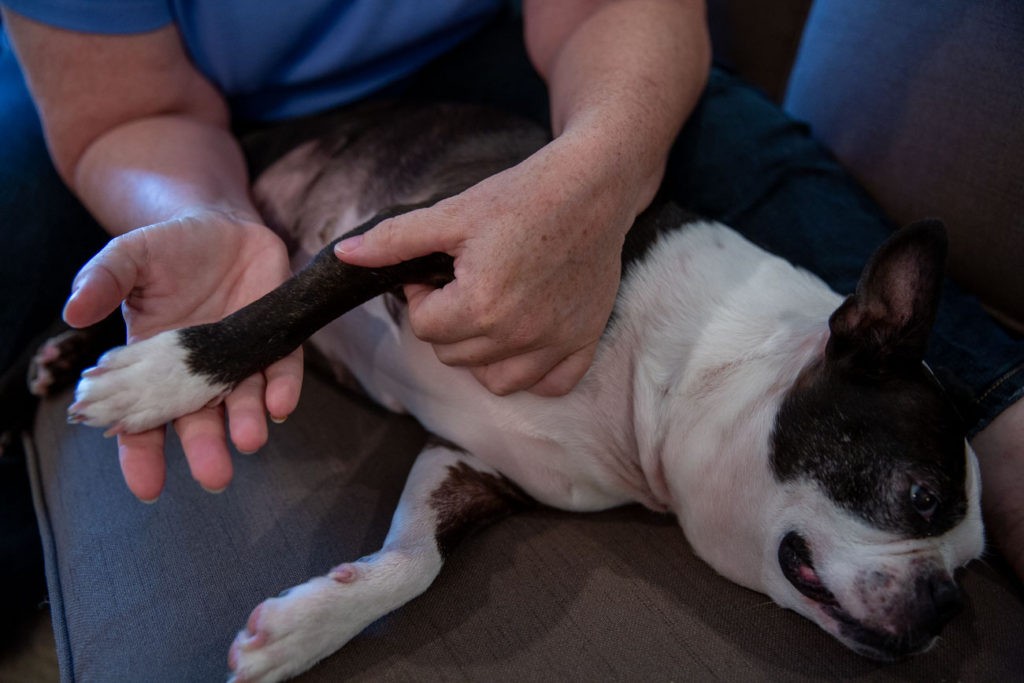
On the other leg, I find a loose scab on the lower hind leg, below her hock joint where there’s no muscle, only skin and bone and stuff. I take a closer look and wonder how long this has been there, I haven’t been diligent with my skin checks or I’d have a better idea. I have it on my diagram, and if it’s still there by Friday, I’ll note it as a wound that isn’t wanting to heal. Wounds that won’t heal are a red flag that something is not right. Always tell your veterinarian if your dog has a sore that isn’t healing.
While it’s not a bump or lump, Sassy has irritated skin between her toes from licking them. I make a note as I want to be sure I ask the vet for suggestions. Sassy needs some relief from her itchy feet.
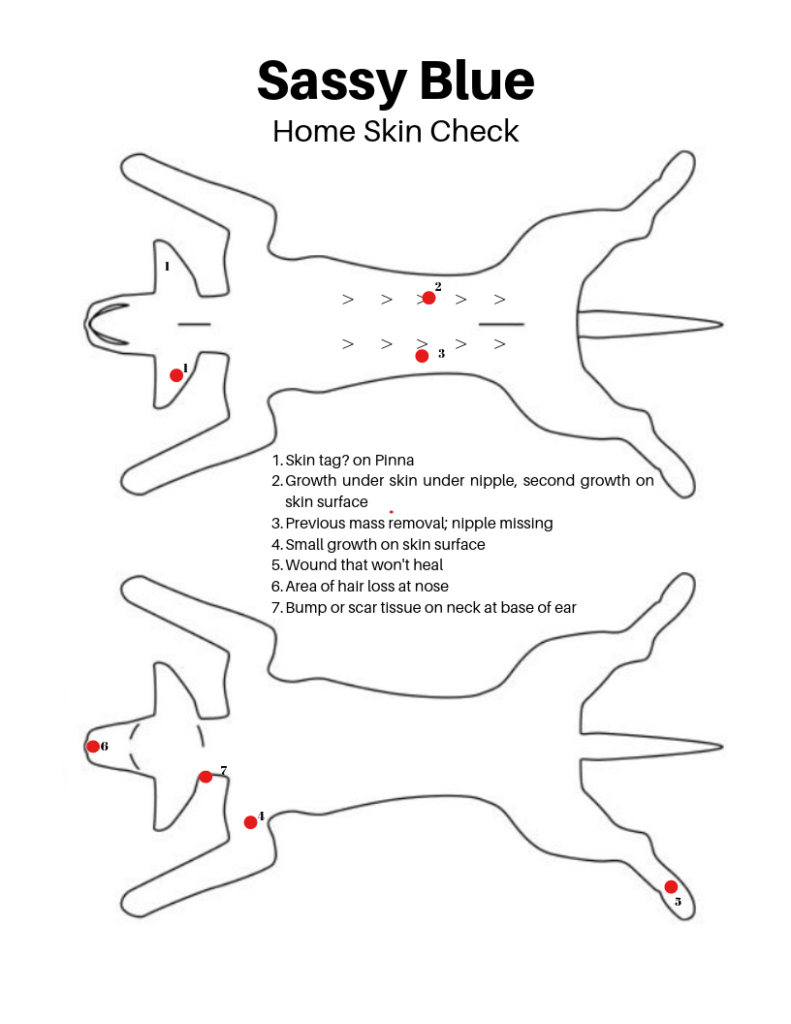
How easy is that?!
How Often Should You Check Your Dog For Lumps?
How often should you do a skin check? A lot depends upon your dog’s medical history (have they had lumps before?) and their breed. I ‘d like to say I do a “formal” skin check every week, but it’s more like every other week. And, that little bump I found on Sassy’s upper leg/hip? I could have just as easily found it as I pet her while she was snoozing on my lap.
You don’t want to go a long time without checking your dog for lumps. A month is too long, in my opinion. This is especially true if you have a breed of dog that is predisposed to certain cancers or growths. I have and foster Boston terriers. They are notorious for developing several different types of growths, lumps, and bumps. I want to catch them early!
Do you have a method of checking your dog’s skin for lumps that works for you? Share your routine in comments!
I’ll provide a follow-up post to let you know about Sassy’s surgery and pathology reports. We hope for a great report and a worry-free prognosis! (Update: Sassy had a couple of bumps removed and all came back benign. She has a clean bill of health.)
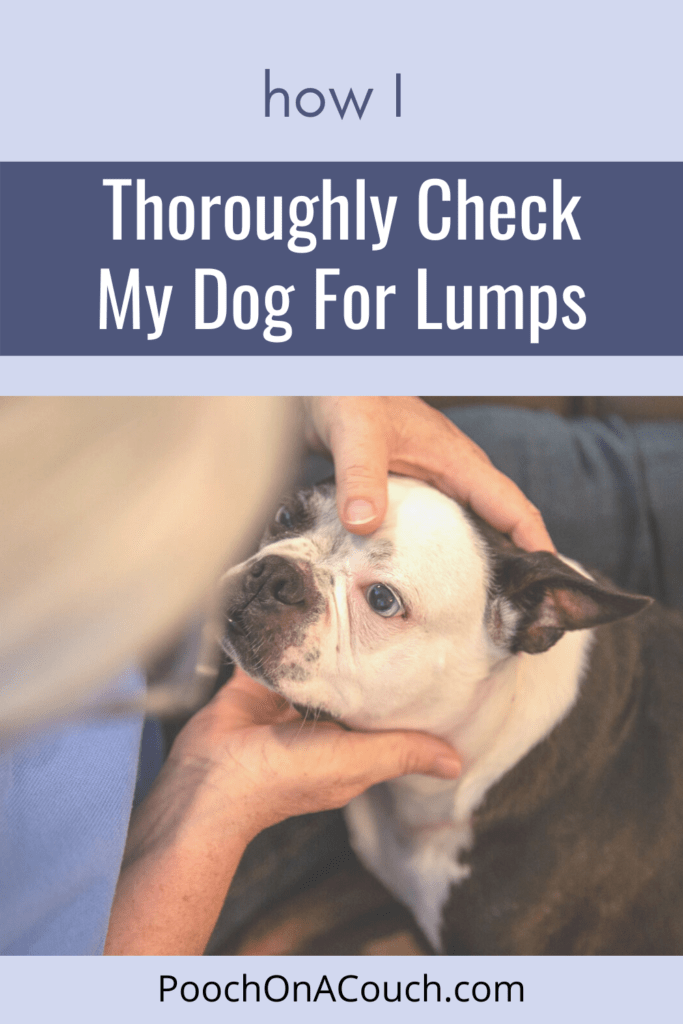
Veterinary Oncology: What to Do With Lumps and Bumps
Popular Posts
- HOW TO CHOOSE A DOG RESCUE AGENCY
- ULTIMATE GUIDE TO FOSTERING: 10 SKILLS YOU NEED
- VOLUNTEER IF YOU CANNOT FOSTER

